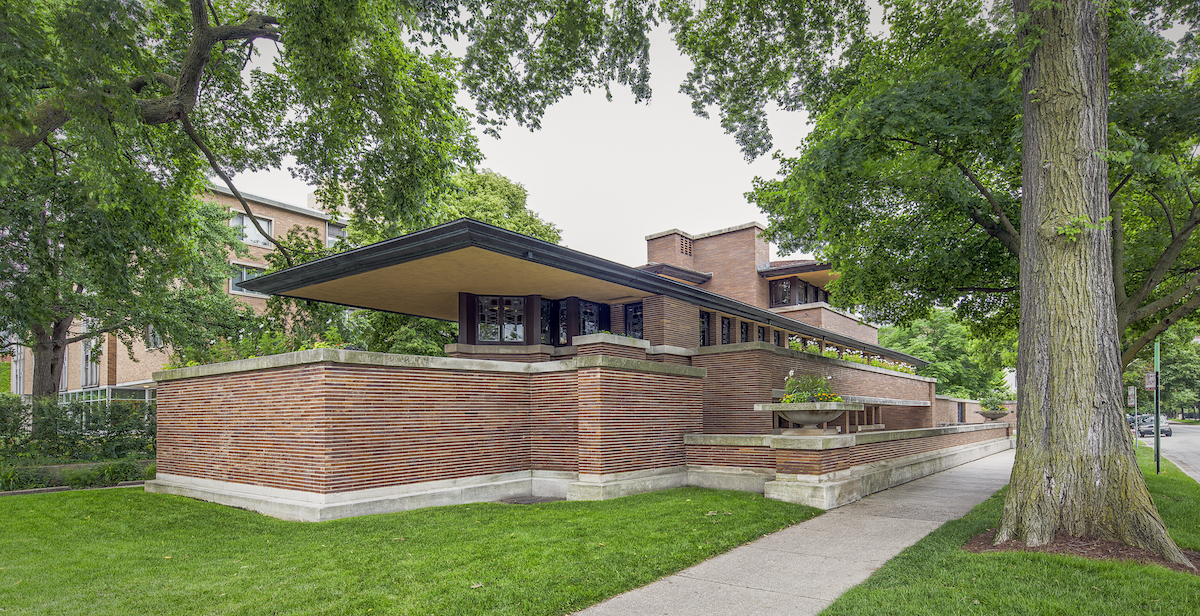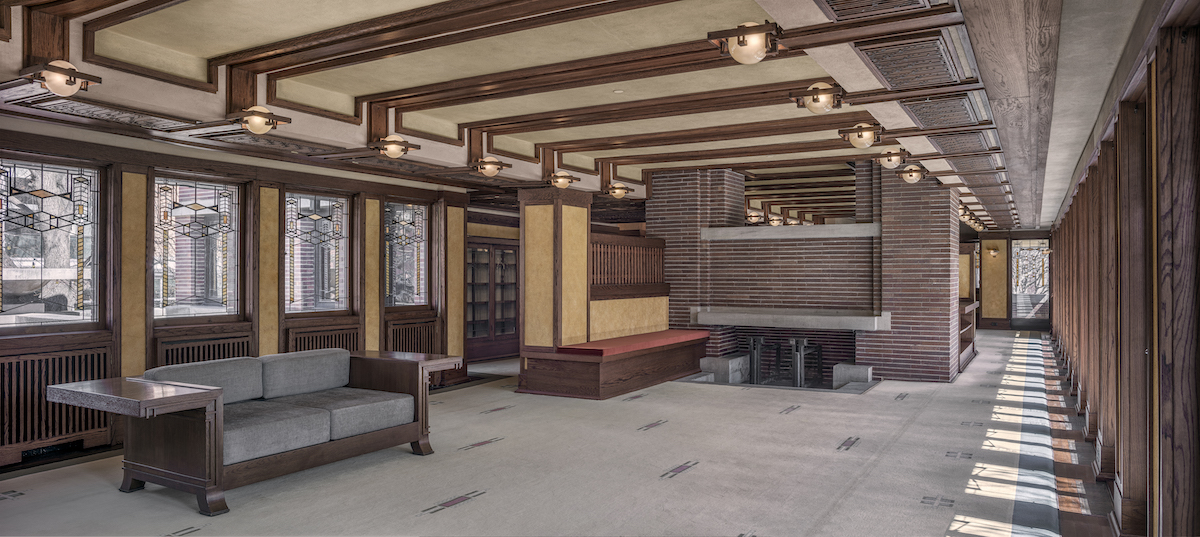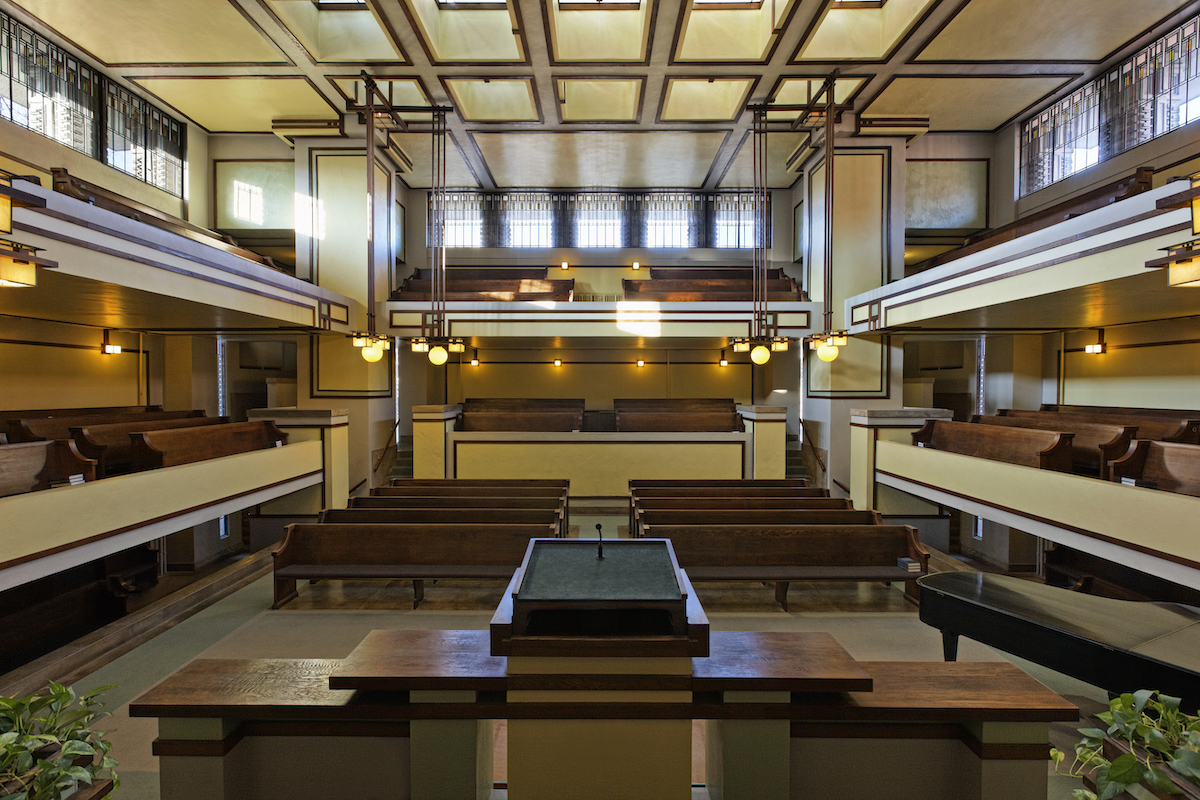During the 43rd session of the World Heritage Committee, currently taking place in Baku, Republic of Azerbaijan (June 30 - July 10, 2019), the World Heritage Committee named eight projects by Frank Lloyd Wright to the UNESCO World Heritage List.
The designation, officially named “The 20th century Architecture of Frank Lloyd Wright,” includes signature works designed by the architect during the first half of the 20th century. They are:
• Aline Barnsdall Hollyhock House (Los Angeles)
• Fallingwater (Mill Run, Pa.)
• Frederick C. Robie House (Chicago)
• Herbert and Katherine Jacobs House (Madison, Wis.)
• Solomon R. Guggenheim Museum (New York)
• Taliesin (Spring Green, Wis.)
• Taliesin West (Scottsdale, Ariz.)
• Unity Temple (Oak Park, Ill.)
On making the selection, the World Heritage Committee stated: “These buildings reflect the ‘organic architecture’ developed by Wright, which includes an open plan, a blurring of the boundaries between exterior and interior, and the unprecedented use of materials such as steel and concrete. Each of these buildings offers innovative solutions to the needs for housing, worship, work or leisure. Wright's work from this period had a strong impact on the development of modern architecture in Europe.”
In Chicago, the UNESCO designation coincides with the Frank Lloyd Wright Trust’s announcement of a new Frank Lloyd Wright Visitor and Education Center. The trust owns and maintains Wright’s Home and Studio in Oak Park, Ill., and operates public tours and programs at five Chicago area historic sites, including Unity Temple (1905-08) and Robie House (1908-10).
“This UNESCO designation firmly establishes Wright’s place on the international stage of modern architecture,” said Celeste Adams, President & CEO of the Frank Lloyd Wright Trust.
Wright joins pioneers of modern architecture already inscribed on the prestigious list, including Gerrit Rietveld, Walter Gropius, Mies van der Rohe, Le Corbusier, Oscar Niemeyer and Lucio Costa. There are more than 1,000 World Heritage sites around the world, and the group of Wright sites is now among 24 sites in the U.S.
 Frederick C. Robie House, Chicago. Photo: Tim Long, courtesy Frank Lloyd Wright Trust
Frederick C. Robie House, Chicago. Photo: Tim Long, courtesy Frank Lloyd Wright Trust
 Frederick C. Robie House, Chicago. Photo: James Caulfield, courtesy Frank Lloyd Wright Trust
Frederick C. Robie House, Chicago. Photo: James Caulfield, courtesy Frank Lloyd Wright Trust
Related Stories
Architects | May 9, 2017
Spiezle Architectural Group looks to the future
Now in its seventh decade, the firm expands its portfolio and moves into a larger HQs.
Architects | May 9, 2017
Movers + Shapers: The social connector
Studio Gang gains fans with buildings that unite people and embrace the outside world.
Architects | May 5, 2017
An acquisition extends Eppstein Uhen Architects’ national footprint
Has architects in 35 states after acquiring Burkettdesign in Denver.
Great Solutions | May 5, 2017
No nails necessary: Framing system comes together with steel zip ties and screws
Clemson University’s School of Architecture develops a patent-pending construction method that is gaining attention for its potential use in rapid, low-tech sustainable housing.
Multifamily Housing | May 3, 2017
Silicon Valley’s high-tech oasis
An award-winning rental complex takes its design cues from its historic location in Silicon Valley.
Architects | May 3, 2017
Avoiding trouble in paradise: Tips on building successfully in the Caribbean
The island setting itself is at the root of several of these disruptive assumptions.
Multifamily Housing | May 2, 2017
Multifamily housing: 7 exciting, inspiring innovations [AIA Course]
This AIA CES course features seven novel approaches developers and Building Teams are taking to respond to competitive pressures and build more quickly and with more attractive offerings.
Healthcare Facilities | May 1, 2017
Designing patient rooms for the entire family can improve patient satisfaction and outcomes
Hospital rooms are often not designed to accommodate extended stays for anyone other than the patient, which can have negative effects on patient outcome.
Architects | Apr 27, 2017
Number of U.S. architects holds steady, while professional mobility increases
New data from NCARB reveals that while the number of architects remains consistent, practitioners are looking to get licensed in multiple states.









![Multifamily housing today: 7 exciting, inspiring innovations [AIA Course] Multifamily housing today: 7 exciting, inspiring innovations [AIA Course]](/sites/default/files/styles/list_big/public/Screen%20Shot%202017-05-02%20at%2011.55.02%20AM.png?itok=ZS_4opT9)







